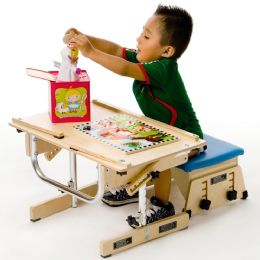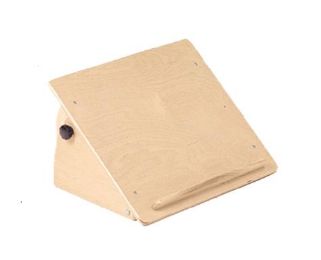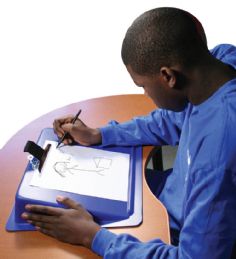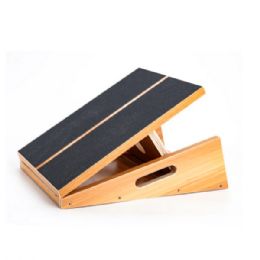









What are the Benefits of Easels and Slant Boards?
Easels and slant boards can be used by children with visual or physical impairments, or with children and adults who simply need a more comfortable way to work.
The possible benefits of using a slant board include:
● Increased range of movement for shoulders, arms and hands (useful for encouraging the development of physically challenged individuals)
● Closer proximity to work materials (essential for visually impaired users)
● Promotion of erect head and trunk (of therapeutic value with children who have difficulty with head and torso stability)
● More optimal eye gaze (again, helpful with children who have visual or attentional issues, as well as preventing eye strain and fatigue)
How do Easels and Slant Boards Work?
Most slant boards and easels are adjustable in terms of the angle of the work surface. They normally have a rubber base or other means of preventing the board from skidding on a table top. Many slant boards and easels can be transported easily, for example, between school and home, school and therapy, or work and home.
There are slant boards that are even more versatile. They include inserts that change the work surface to a mirror, a pegboard, a flannel board, or a clear plexiglass surface. This gives them multiple uses, particularly in the therapy or school setting.
Included in this product category are freestanding easel-style and wall-mounted whiteboards.
Choosing an Easel or Slant Board
The main variable in choosing a slant board or easel is the intended place of use, and the specific function it will serve.
In pre-schools or other school settings, slant boards that promote proper hand and arm support for handwriting are a good choice.
For adults who need a work surface that promotes easier visual access to materials, the choice is rather personal, involving preference for size of the work surface and viewing distance.
Therapists can assist in choosing a slant board or easel that will work to support a child’s therapy goals, whether they involve trunk stability, eye tracking or hand/arm strength. Consult your child’s occupational therapist and/or special needs teacher for help in selecting the best product for your child in this category.
Hulet Smith, OTR/L
Rehabmart Co-Founder & CEO
jh